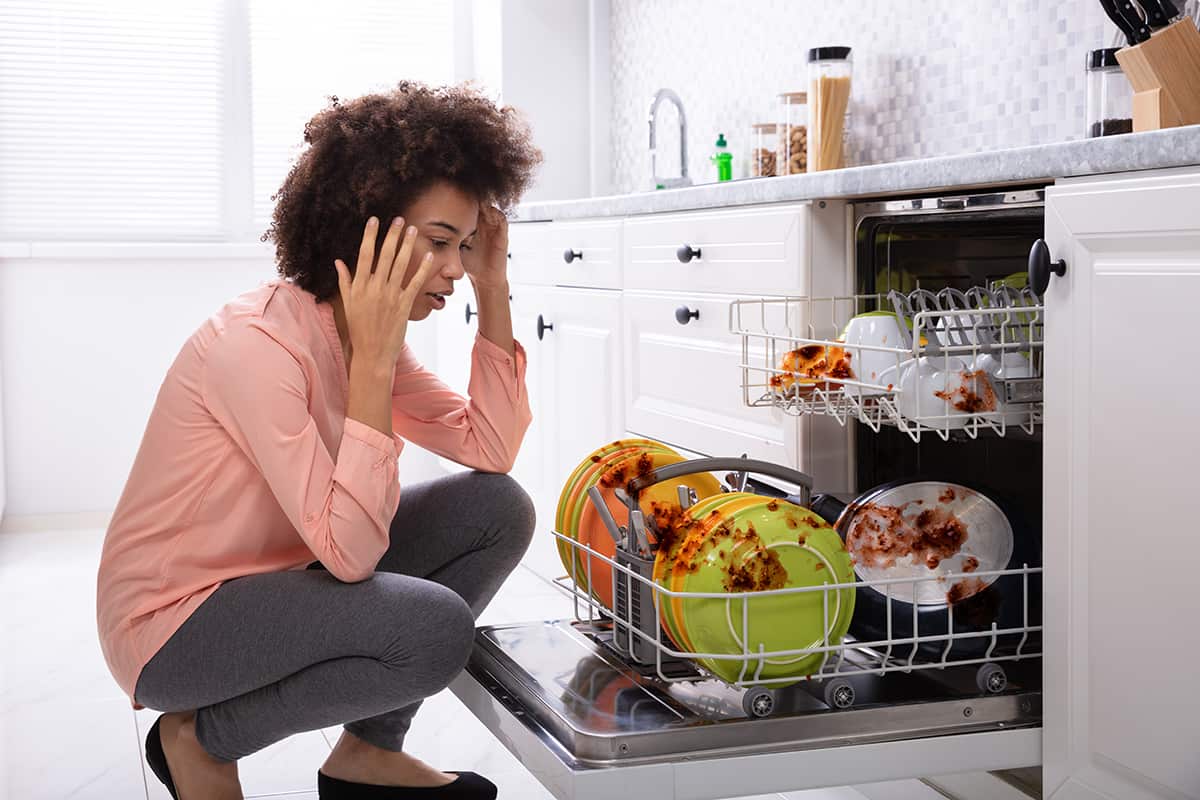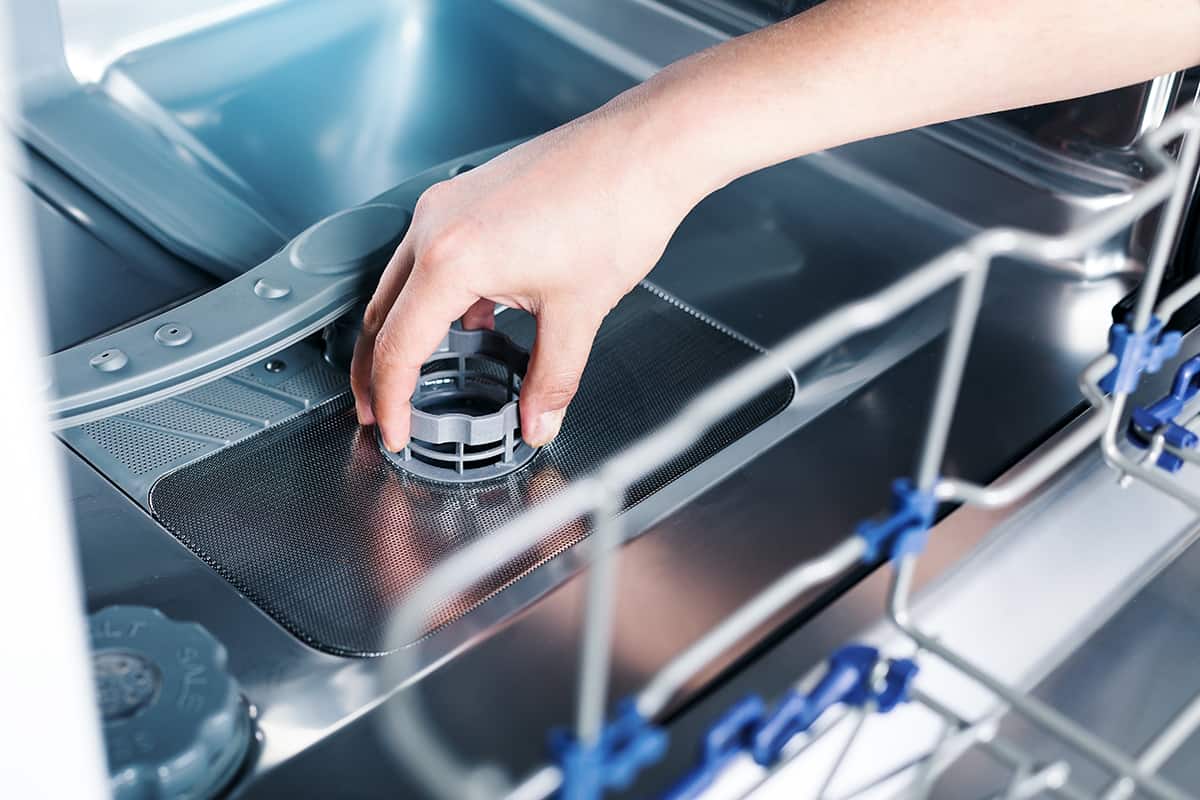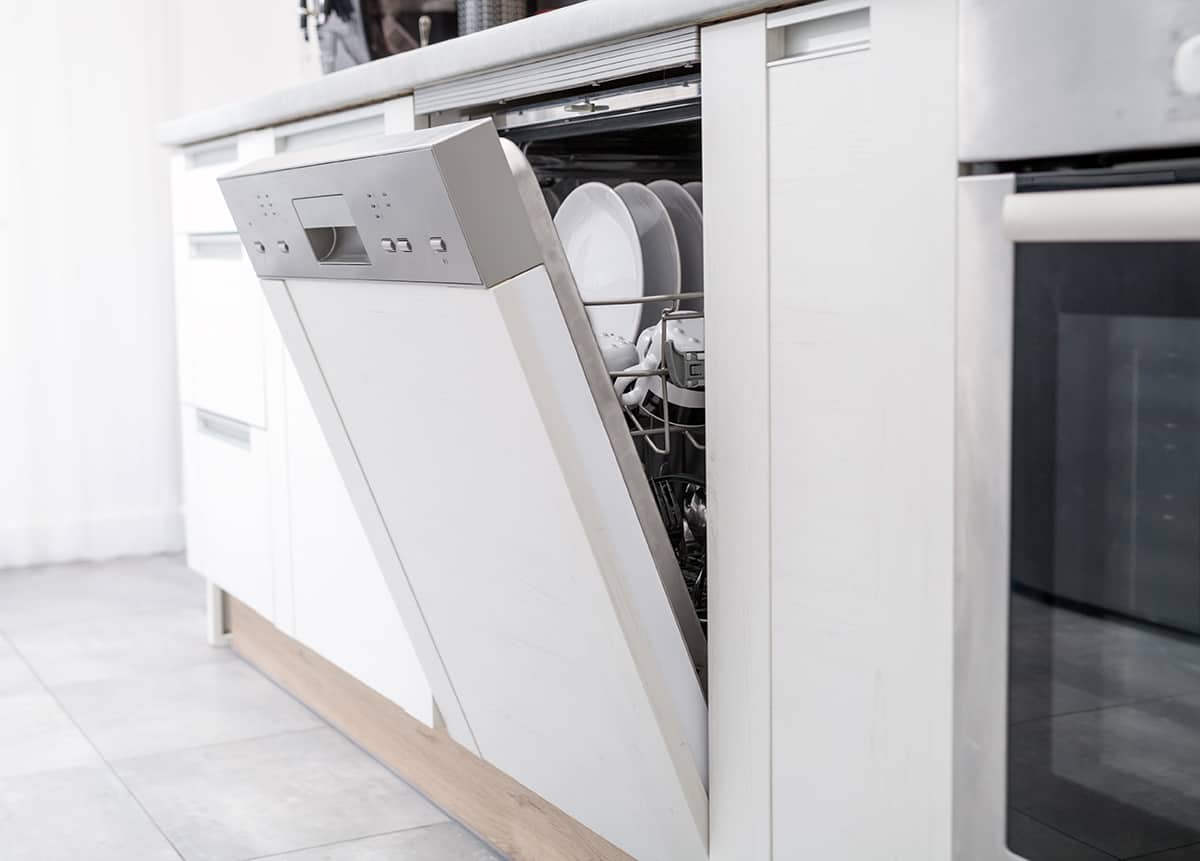When it comes to post-meal cleanup, many people rely on their dishwashers as a go-to appliance to save time and effort. Dishwashers are convenient but can get dirty and need regular cleaning to keep working well. How often should you empty the dishwasher to make sure it’s clean?
It’s recommended that you check your dishwasher at least once a month. Spend a few moments emptying the filter assembly, cleaning the tub, and removing gunk from the drain port. The more frequently you use the machine, the more often you should clean it.
In this guide, I’ll explain how a dishwasher can get so filthy, and how to deep-clean a dishwasher.
How Often Should You Clean Your Dishwasher
The frequency with which you need to clean your dishwasher will depend on a variety of factors, including the type and quantity of dishes you are washing, the water quality in your area, and the overall level of use of the dishwasher.
Regardless of whether you use your dishwasher every day or sparingly, you should clean the dishwasher at least once a month. Doing this will ensure that your dishwasher maintains optimal performance while keeping the gasket from drying out.
What Happens When Your Dishwasher Gets Dirty

It might sound ironic that a dishwasher, a machine designed specifically to clean your dirty dishes, can become dirty over time, but if you’ve owned and used a dishwasher for longer than a month, you already know of this problem.
Due to their purpose and the materials they interact with, dishwashers can become soiled in a number of different ways. The following are some frequent causes of dirty dishwashers and their effects.
1. Old food particles
The leftover debris can clog the filter assembly and/or the drain port, preventing the dishwasher from doing its job of removing food and germs. If the dishwasher’s drain is clogged, it won’t be able to get rid of smells or food particles.
2. Grease
A film of residue may be left on dishes and cookware after washing oily or greasy dishes. In time, the grease will accumulate, forming a film so thick that not even hot water can remove it.
3. Hard water
Dishes and the dishwasher itself may become discolored due to the mineral deposits in hard water, a problem that affects nearly 90% of American homes. These spots are infamously difficult to remove and frequently leave the dishwasher looking dirtier than it did before.
4. Soap debris
Dishwasher detergent can leave behind a soapy film that is both stubborn to remove and an eyesore when you’re done using the machine.
5. Mold and bacteria
Without regular cleaning and maintenance, a dishwasher can become a breeding ground for mold and bacteria, leading to foul odors and even leading to health risks.
How to Deep-Clean a Dishwasher

Follow these steps every month to make sure your stays in tip-top shape:
1. Remove large pieces of food debris from the bottom of the dishwasher
- Empty the dishwasher of any dishes and utensils.
- Make sure the dishwasher’s interior, including the door seal and gasket, is clean by wiping it down.
- Check the bottom of the dishwasher for any visible debris.
- Use a flashlight to help you see any debris that may be hiding in the corners or under the racks.
- Carefully scoop out any food scraps or broken glass from the bottom of the dishwasher using a pair of tongs or a spoon.
- A soft-bristled brush or scrub pad can be helpful if the debris is stuck to the bottom of the dishwasher. Take care not to damage the machine by scratching the inside.
- After you have taken out all of the obvious trash, run a hot water cycle to wash away any stray scraps of food or dirt that may have been left behind.
2. Empty the dishwasher filter assembly
Most dishwashers have 2 filters: one with fine mesh for smaller particles and one with larger holes for larger debris. The filters are typically concealed beneath the lower spray arm or a removable panel near the dishwasher’s base.
You may need a screwdriver or pliers to remove the filters from your dishwasher, but this will depend on the model you have. While the filter assembly in some dishwashers can be removed with a simple lift, in others the filters must be removed one by one.
- Scrub the filters with a toothbrush or small scrub brush and hot water to remove any remaining debris or food particles. After soaking the filters in a solution of equal parts water and vinegar for a few minutes, you can rinse them clean.
- Make sure the filters are completely dry before putting them back in the dishwasher by using a towel or a blow dryer set to the coolest setting.
- Make sure the filters are firmly in place before closing the dishwasher door after you’ve reassembled the filter assembly.
- Run a hot water cycle to rinse out any remaining debris and vinegar to ensure that the filters are clean and functioning properly.
3. Get rid of limescale with vinegar or baking soda
It can be challenging to clean a dishwasher of limescale, a mineral deposit that forms on surfaces exposed to hard water. You can use vinegar or baking soda to get rid of hard water stains. Here’s how you do it:
With vinegar
- Fill a dishwasher-safe container with equal parts water and vinegar and place it on the top rack of the dishwasher.
- Run a hot water cycle to allow the vinegar to circulate throughout the dishwasher. The vinegar will help to dissolve the limescale and any other mineral deposits.
- If the limescale is particularly stubborn, you may need to repeat the process a few times to remove it fully. You can also try using a commercial limescale remover or a mixture of equal parts water and lemon juice.
- Once the limescale is removed, run a hot water cycle to rinse out any remaining vinegar or cleaner.
With baking soda
- In a small bowl, mix together equal parts baking soda and water to form a paste. The consistency should be thick but spreadable.
- Use a sponge or scrub brush to apply the baking soda paste to the inside of the dishwasher, including the door seal and gasket.
- Scrub the baking soda paste into any stubborn stains or areas of built-up grime.
- Let the paste sit for a few hours or overnight. This will allow the baking soda to work its way into the stains and loosen any dirt or grime.
- Run a hot water cycle to rinse out the baking soda paste and any remaining debris.
- If you have hard water stains or mineral deposits inside the dishwasher, you can try using
4. Clean the drain port
- If the drain port is clogged with a large amount of food or debris, you may need to use a small scrub brush or a toothbrush to gently loosen the clog. Be careful not to scratch the interior of the dishwasher.
- Once you have removed all of the visible debris, run a hot water cycle to rinse out any remaining food particles or dirt.
- If the drain port is still clogged, you may need to use a commercial drain cleaner or a mixture of equal parts water and vinegar to break up the clog. Follow the instructions on the drain cleaner or pour the vinegar mixture into the drain port and let it sit for a few hours before running another hot water cycle.






